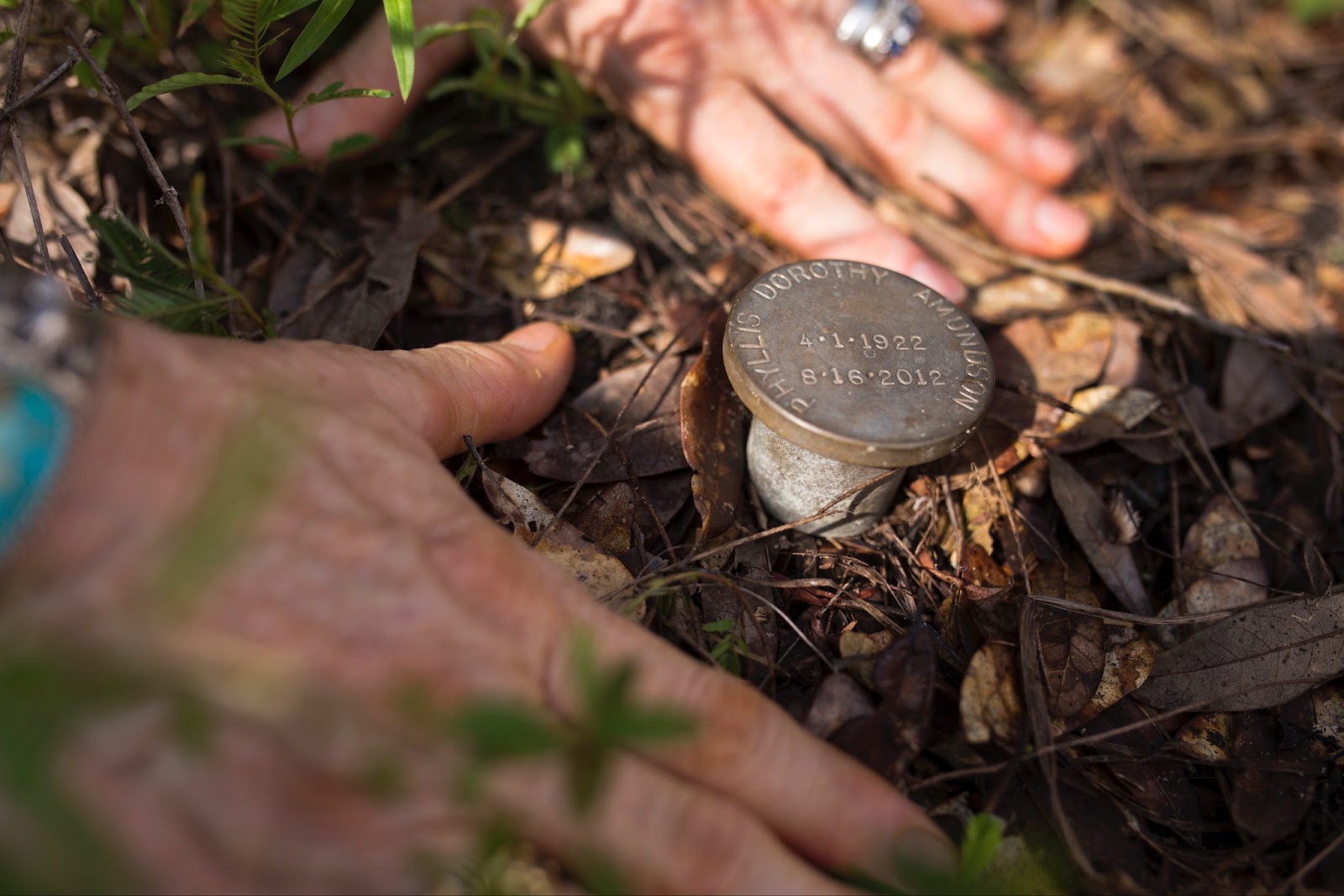While cremation may seem to be a more benign environmental choice, the average cremation uses 28 gallons of fuel to burn a single body. This emits about 540 pounds of carbon into the atmosphere in addition to mercury, nitrogen oxide and sulfur dioxide.
In a Natural Burial, one’s body and only biodegradable accessories return to the earth so there is little or no environmental footprint.
The specific location of your burial is determined by cemetery operations managers just prior to interment. This maximizes the usefulness of the space and maintains equipment travel corridors needed for burial. It is a primary goal of the RHCC to work with and around the trees to minimize impact to them during burials, and this is much easier when specific plot locations are not reserved in advance.
There may exist natural objects such as trees, tree roots, or stones within either type of plot. The plot sizes do not indicate the size of the grave itself, which is typically closer to 3’ by 8’ for full body burial. Overall density will be maintained at or below the Green Burial Council standard for a conservation burial ground: a maximum density of 400 burials per acre and an average density of 300 burials per acre. We estimate that density will be even less than 300 per-acre. By comparison, many conventional cemeteries have densities of 1,000+ per acre.
Photo below is a brass marker from Prairie Creek Conservation Cemetery in Gainesville. This is the type of marker that will be used at Red Hills Community Cemetery.

While many Cemeteries in the Tallahassee Region do not keep their pricing publicly available, our volunteers consolidated fees and costs from nearby cemeteries and funeral homes to create an overall picture of potential costs:
– Plot: Range from $1,048 to $6,995
– Caskets: Range from $1,695 to $28,000
– Opening/Closing of Grave: Range from $1,395-$2,000
– Embalming: $1,095
– Totals: Range from ~$5,233 – $38,090+
Each of these burials in traditional cemeteries don’t include the cost to the environment. These cemeteries have highly manicured spaces and embalming fluid/plastics/metals in the ground. At RHCC a portion of the burial is used to conserve, restore, and protect the land through land management planned in a conservation easement with a land trust.
The RHCC is a not-for-profit organization with the mission of connecting people and the land. There are no hidden fees or profit motives. The $4,000 RHCC Membership Fee includes:
– Interment Certificate (Right to the Burial Plot)
– Opening and Closing of the Grave one hour before and one hour after the burial for a gathering with table, chairs, shade tent,
– Participation in environmental preservation of the land.
Additional questions? Reach out to contact@redhillscommunitycemetery.com
If you have a group or organization interested in learning more about Red Hills Community Cemetery, contact us to schedule a presentation.
Additional Resources for more information
Green Burial Council’s Conservation Burial Ground
Other Florida Natural Burial Cemeteries:
